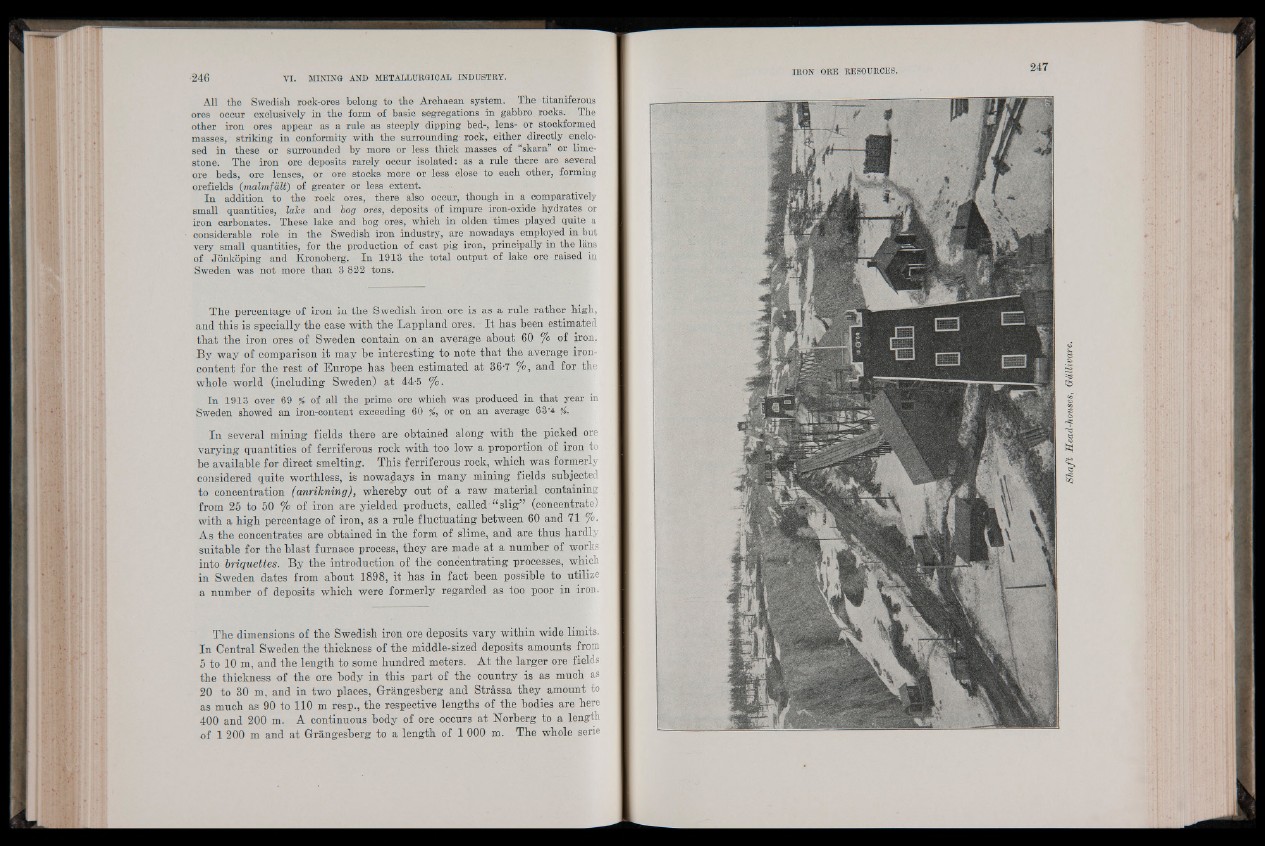
All the Swedish rock-ores belong to the Archaean system. The titaniferous
ores occur exclusively in the form of basic segregations in gabbro rocks. The
other iron ores appear as a rule as steeply dipping bed-, lens- or stockformed
masses, striking in conformity with the surrounding rock, either directly enclosed
in these or surrounded by more or less thick masses of “skam” or limestone.
The iron ore deposits rarely occur isolated: as a rule there are several
ore beds, ore lenses, or ore stocks more or less close to each other, forming
orefields (malmfalt) of greater or less extent.
In addition to the rock ores, there also occur, though in a comparatively
small quantities, lake and bog ores, deposits of impure iron-oxide hydrates or
iron carbonates. These lake and bog ores, which in olden times played quite a
considerable role in the Swedish iron industry, are nowadays employed in but
very small quantities, for the production of cast pig iron, principally in the Ians
of Jonkoping and Kronoberg. In 1913 the total output of lake ore raised in
Sweden was not more than 3 822 tons.
The percentage of iron in the Swedish iron ore is as a rule rather high,
and this is specially the case with the Eappland ores. It has been estimated
that the iron ores of Sweden contain on an average about 60 % of iron.
By way of comparison it may be interesting to note that the average iron-
content for the Test of Europe has been estimated at 36'7 %, and for the
whole world (including Sweden) at 44-5 %.
In 1913 over 69 / of all the prime ore which was produced in that year in
Sweden showed an iron-content exceeding 60 %, or on an average 63'4 %.
In several mining fields there are obtained along with the picked ore
varying quantities of ferriferous rock with too low a proportion of iron to
be available for direct smelting. This ferriferous rock, which was formerly
considered quite worthless, is nowadays in many mining fields subjected
to concentration (anrihning), whereby out of a raw material containing
from 25 to 50 °/o of iron are yielded products, called“ slig” (concentrate)
with a high percentage of iron, as a rule fluctuating between 60 and 71 °/o.
As the concentrates are obtained in the form of slime, and are thus hardly
suitable for the blast furnace process, they are made at a number of works
into briquettes. By the introduction of the concentrating processes, which
in Sweden dates from about 1898, it has in fact been possible to utilize
a number of deposits which were formerly regarded as too poor in iron.
The dimensions of the Swedish iron ore deposits vary within wide limits.
In Central Sweden the thickness of the middle-sized deposits amounts from
5 to 10 m, and the length to some hundred meters. At the larger ore fields
the thickness of the ore body in this part of the country is as much as
20 to 30 m, and in two places, Grangesberg and Strassa they amount to
as much as 90 to 1 1 0 m resp., the respective lengths of the bodies are here
400 and 200 m. A continuous body of ore occurs at Norberg to a length
of 1 200 m and at Grangesberg to a length of 1 000 m. The whole serie
IRON ORE RESOURCES.